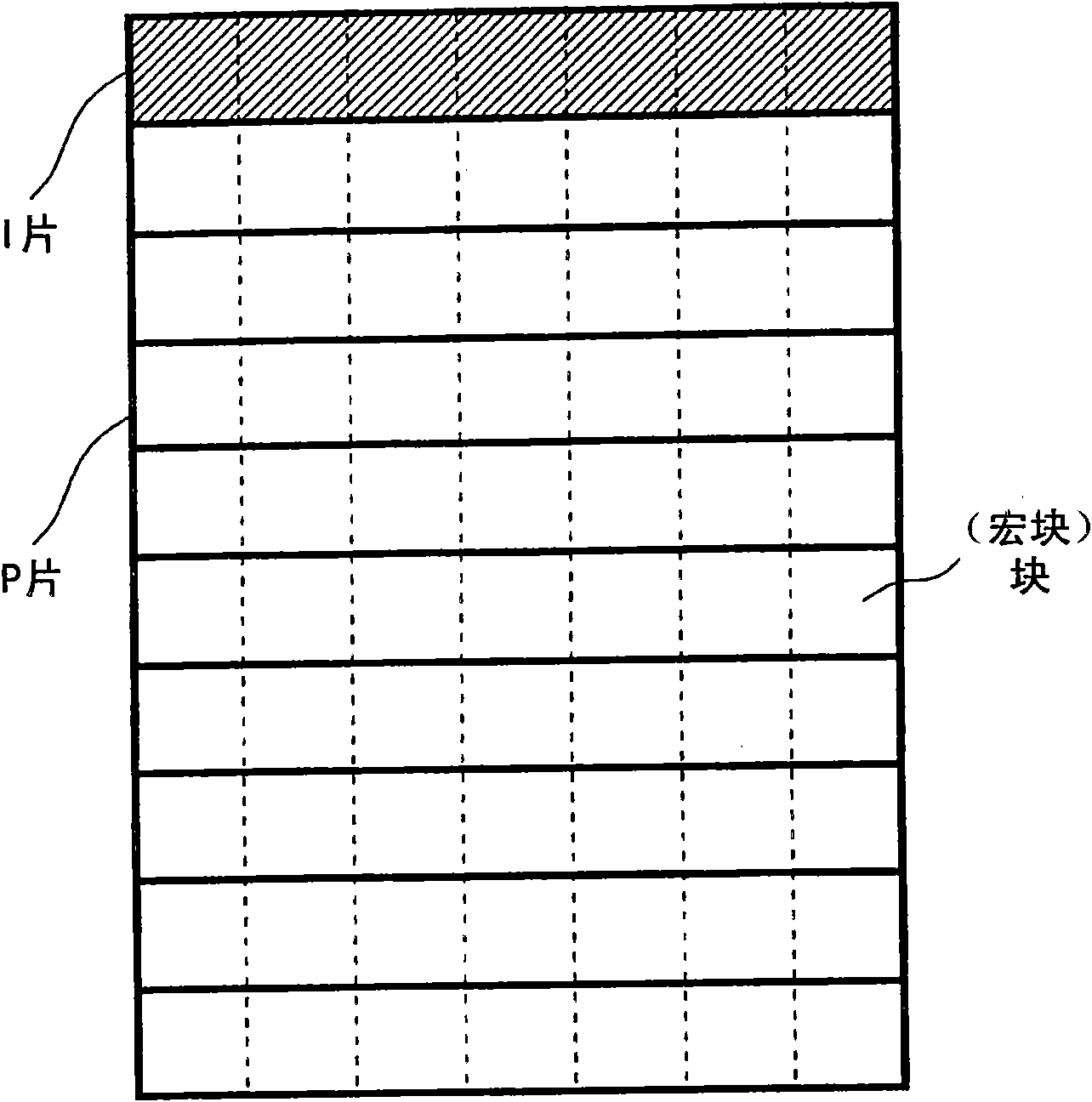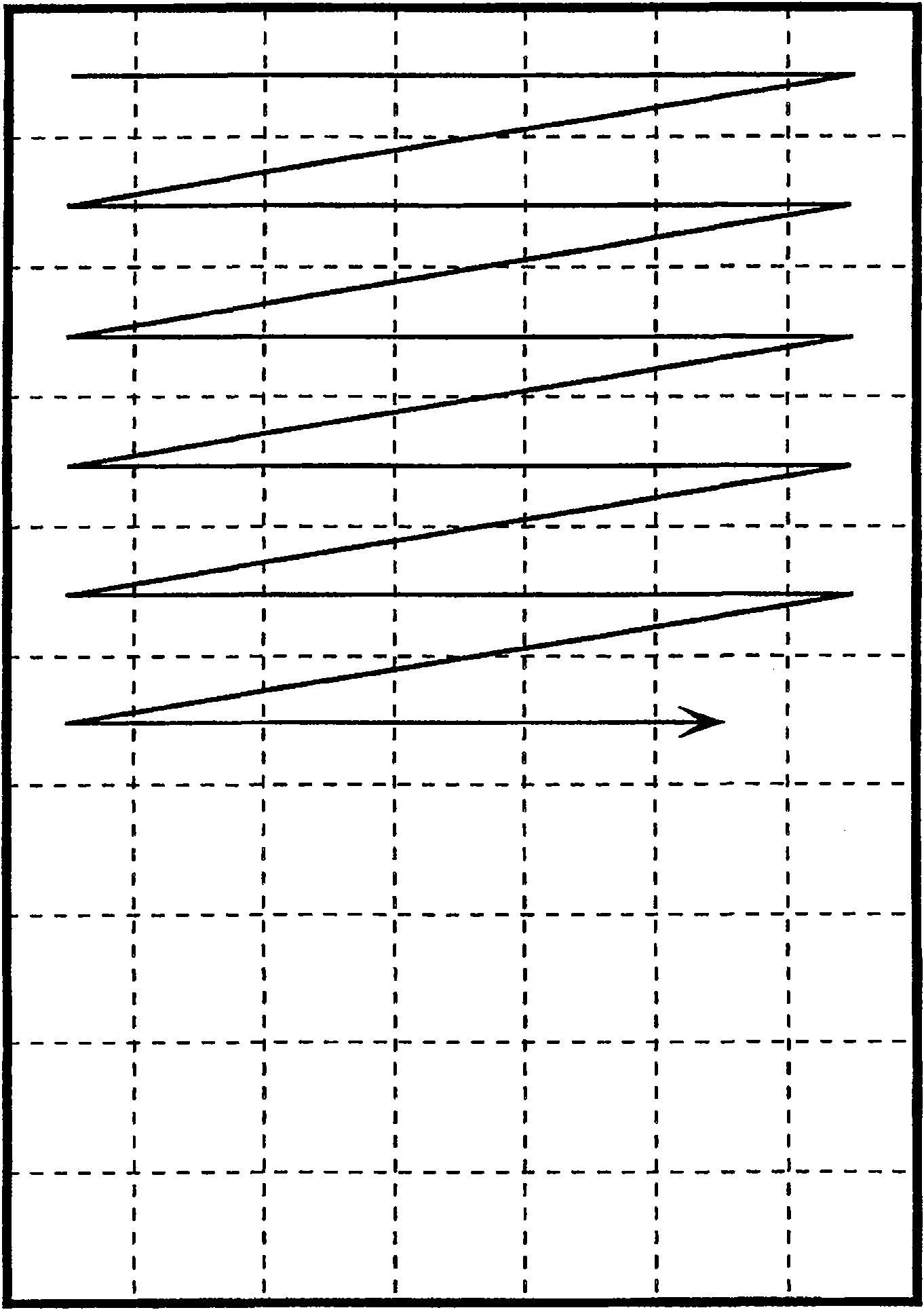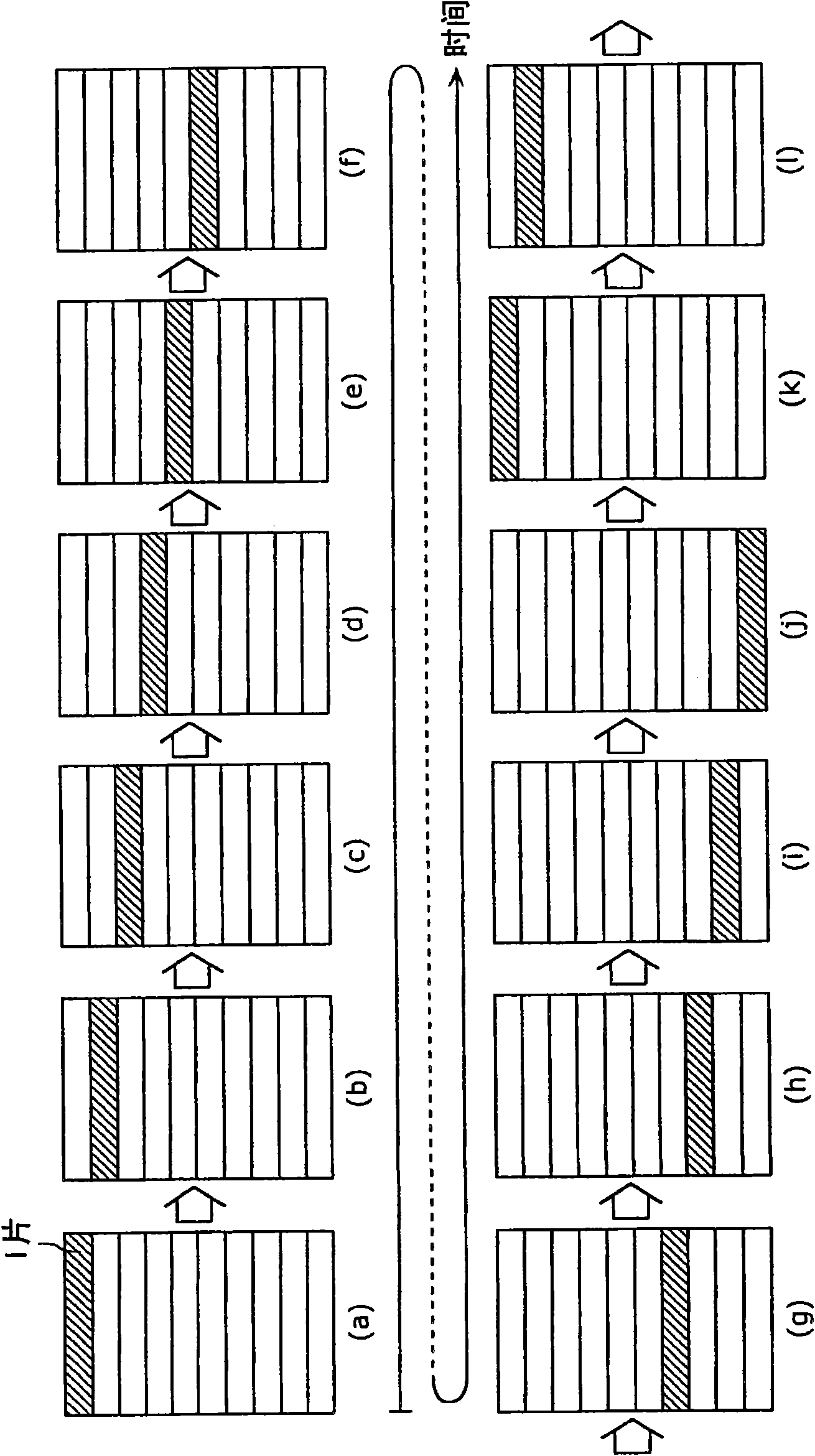Image encoding method and image encoding device
一种图像编码、图片编码的技术,应用在图像通信、电视、电气元件等方向,能够解决成为问题、初始化处理多、难比特数编码控制等问题
- Summary
- Abstract
- Description
- Claims
- Application Information
AI Technical Summary
Problems solved by technology
Method used
Image
Examples
Embodiment approach 1
[0221] Picture 11 It is a figure explaining the relationship between a slice and a block in the case of using the slice dividing method of Embodiment 1 of this invention. Picture 11 The picture (1 frame) shown is composed of multiple blocks. Among the blocks constituting the picture, the areas of the blocks with diagonal lines are slices and are I slices. The multiple blocks surrounded by other thick lines are slices and are P slices. Here, an example in which a picture is composed of I slices and P slices is shown. figure 1 The difference between the slice division method of the MPEG-2 standard and the slice division method of the present invention is that the number of blocks contained in the I slice is smaller than the number of blocks contained in the P slice (the slice size is smaller).
[0222] Picture 12 It is a diagram showing an example of the slice division of pictures that are consecutive in time order in Embodiment 1 of the present invention. Here, the slashed sli...
Embodiment approach 2
[0251] Next, the second embodiment will be described below. The description of the same structure and the same operation as in Embodiment 1 is omitted.
[0252] Figure 15 It is a diagram showing an example of the slice division of pictures that are consecutive in time order in Embodiment 2 of the present invention. Here, the slashed slices are I slices, and the other slices are P slices. Picture 12 The slice division method of Embodiment 1 in Figure 15 The difference between the slice division method of the second embodiment in this embodiment is that the size of the P slice immediately after the I slice is constant (N blocks), and the boundary position (slice division position) of the P slice below the I slice is shifted down by one The number of rows of the slice.
[0253] Therefore, in the second embodiment, the feature is that the number of slices constituting a picture is smaller than that in the first embodiment. For example, compare Picture 12 with Figure 15 . If com...
Embodiment approach 3
[0257] Next, the third embodiment will be described below. The description of the same structure and the same operation as those of Embodiments 1 and 2 is omitted.
[0258] Figure 17 It is a diagram showing an example of the slice division of pictures that are consecutive in time order according to Embodiment 3 of the present invention. Here, the slashed slices are I slices, and the other slices are P slices.
[0259] In the first embodiment, except for the pictures between the pictures with I slices on the bottom row and the pictures with I slices on the top row, all pictures include I slices. In this third embodiment, assuming that the network quality is high, the insertion frequency of I slices can also be less. In this case, such as Figure 17 As shown, pictures that do not contain I slices are inserted regularly.
[0260] However, it is known that in the case of reproducing a stream, it is generally best to insert more than one I picture in the stream for 2 seconds. For exa...
PUM
 Login to View More
Login to View More Abstract
Description
Claims
Application Information
 Login to View More
Login to View More - R&D
- Intellectual Property
- Life Sciences
- Materials
- Tech Scout
- Unparalleled Data Quality
- Higher Quality Content
- 60% Fewer Hallucinations
Browse by: Latest US Patents, China's latest patents, Technical Efficacy Thesaurus, Application Domain, Technology Topic, Popular Technical Reports.
© 2025 PatSnap. All rights reserved.Legal|Privacy policy|Modern Slavery Act Transparency Statement|Sitemap|About US| Contact US: help@patsnap.com



